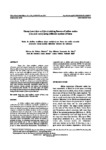Use este identificador para citar ou linkar para este item:
http://www.alice.cnptia.embrapa.br/alice/handle/doc/1024347Registro completo de metadados
| Campo DC | Valor | Idioma |
|---|---|---|
| dc.contributor.author | RIBEIRO, M. de F. | pt_BR |
| dc.contributor.author | SILVA, E. M. S. da | pt_BR |
| dc.contributor.author | LIMA JÚNIOR, I. de O. | pt_BR |
| dc.contributor.author | KIILL, L. H. P. | pt_BR |
| dc.date.accessioned | 2015-09-18T11:11:11Z | pt_BR |
| dc.date.available | 2015-09-18T11:11:11Z | pt_BR |
| dc.date.created | 2015-09-18 | pt_BR |
| dc.date.issued | 2015 | pt_BR |
| dc.identifier.citation | Ciência Rural, Santa Maria, v. 45, n. 10, p. 1768-1773, out. 2015. | pt_BR |
| dc.identifier.uri | http://www.alice.cnptia.embrapa.br/alice/handle/doc/1024347 | pt_BR |
| dc.description | Honey bees (Apis mellifera) pollinate melon (Cucumis melo) and improve production and quality of fruits. However, little is known about bee behavior and number of hives required. The aims of this study were to compare bees visiting flowers in crop areas with different number of hives (0, 1, 2, and 3), and to evaluate which is the best number. Flowers were observed (n=78) from 5 am to 6 pm, for five consecutive days, in four experimental areas (0.5ha each). Comparisons were made for male (MF) and hermaphrodite (HF) flowers, number of hives and fruit production. The HF were always more visited than MF. Most comparisons made for three hives presented significant differences, since visits increased drastically, competition among bees for floral resources became stronger and reduced the production of commercial fruit (93.4%). On the other hand, the highest percentage of commercial fruit was obtained (99%) with two hives, setting the ideal number of hives as four hives ha-1. | pt_BR |
| dc.language.iso | eng | eng |
| dc.rights | openAccess | eng |
| dc.subject | Abelhas melíferas | pt_BR |
| dc.subject | Número de colmeias | pt_BR |
| dc.subject | Visitação | pt_BR |
| dc.subject | Biologia floral | pt_BR |
| dc.subject | Melon | pt_BR |
| dc.title | Visita de abelhas melíferas (Apis mellifera) em flores de melão amarelo (Cucumis melo) usando diferente número de colmeias. | pt_BR |
| dc.type | Artigo de periódico | pt_BR |
| dc.date.updated | 2016-02-12T11:11:11Z | pt_BR |
| dc.subject.thesagro | Abelha | pt_BR |
| dc.subject.thesagro | Melão | pt_BR |
| dc.subject.thesagro | Polinização | pt_BR |
| dc.subject.thesagro | Inseto | pt_BR |
| dc.subject.thesagro | Apis Mellifera | pt_BR |
| dc.subject.thesagro | Cucumis Melo | pt_BR |
| dc.subject.nalthesaurus | Pollination | pt_BR |
| dc.subject.nalthesaurus | Honey bees | pt_BR |
| riaa.ainfo.id | 1024347 | pt_BR |
| riaa.ainfo.lastupdate | 2016-02-12 | pt_BR |
| dc.identifier.doi | 10.1590/0103-8478cr20140974 | pt_BR |
| dc.contributor.institution | MARCIA DE FATIMA RIBEIRO, CPATSA; EVA MÔNICA SARMENTO DA SILVA, UNIVASF; IVAN DE OLIVEIRA LIMA JÚNIOR; LUCIA HELENA PIEDADE KIILL, CPATSA. | pt_BR |
| Aparece nas coleções: | Artigo em periódico indexado (CPATSA)  | |
Arquivos associados a este item:
| Arquivo | Descrição | Tamanho | Formato | |
|---|---|---|---|---|
| Marcia2015.pdf | 543.09 kB | Adobe PDF |  Visualizar/Abrir |









